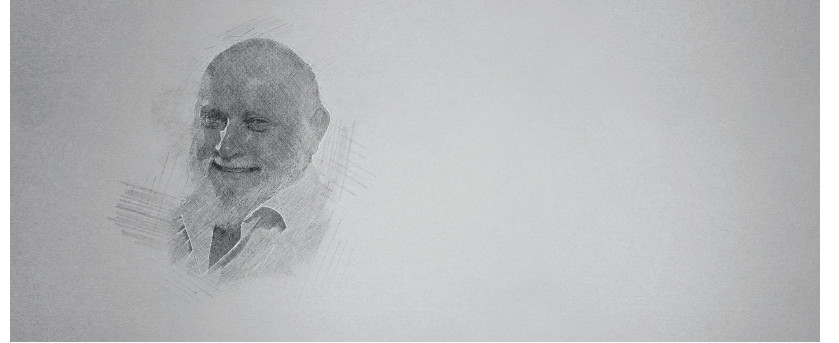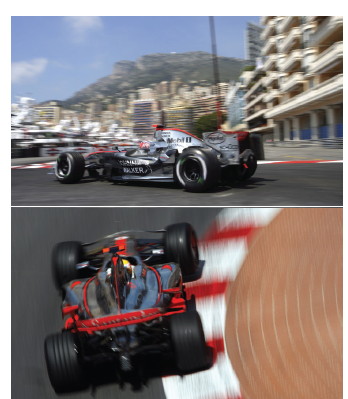THE ARCHIVES

Years ago now, I got bored with merely writing about racing cars. Friends and colleagues derived tremendous enjoyment from covering races, somewhere in the world, every weekend. In contrast I proved too thick to work out how to make that pay – but I did find that great drivers, designers and team principals had much more time to talk mid-week, when back home. So I saw them there…
Ever since I was a tiny kid – well, relatively small – I’ve been totally starstruck by racing cars. Show me a car that somebody raced – no matter whether it’s from 1896 or 1956 or 2006 – and, well, it brightens my day.
I wanted to get hands-on, largely to teach myself more about these wonderful things. I wrote for a Japanese magazine, and one day my editor there asked if I could help a wealthy Tokyo businessman who wanted to collect some racing cars. Whoopee-nerdle. We bought a glorious Alfa Romeo T33 Stradale, a late 1930s Alfa 6C, I commissioned a Lister-Jaguar ‘Knobbly’ to be assembled from largely original parts including a real chassis – and we bought the ex-Graham Hill Lotus 49, now at Beaulieu. It lived in my corrugated-iron garage for 18 months while I painstakingly dismantled and stripped it. Short of you know what, unthinkable even on the Surrey/Hampshire border, one could not have developed a more intimate knowledge of that wonderful car.
Around the same time I got to know auctioneer Robert Brooks. Like-minded, we gelled and have worked together ever since, right through to the modern Bonhams auction house, handling hundreds of great cars, and again I got to explore and handle – and sometimes drive – the major ones among them…
Now we have been asked to offer Ayrton Senna’s 1993 Monaco GP-winning McLaren-Ford MP4/8A to the market, back at Monaco this May. Ooh what a bore… spending time searching the McLaren archives – and with the car itself, oh my.
This 25-year-old lady was sitting there, body panelling removed, cable-connected to two contemporary high-tech laptops. Her 3.5-litre Ford HB engine – a relatively simple-for-the-time 75-degree V8 already had warm oil and coolant. Carer Paul Lanzante nodded his head and said to his guys, “Let’s give it a go.” The hand-held starter-motor wand somewhat ingloriously jammed up the gearbox tail, whirred, one second, two seconds, three and WHAAAAAAHHHH! – the V8 fired with a creamy, clean, confidently reassuring blare. Right there the car in which Ayrton had scored his record-breaking sixth and last Monaco GP win burst into renewed life.
I touched the nose of its carbon-composite monocoque fuselage, which was vibrating in sympathy with that roaring V8 engine. My word, she has a pulse. That’s the joy, you see – these things really live. The great Champion driver might be lost to us, but the great Championship cars live on…
Within the F1 world of 1993, McLaren MP4/8A-6 was relatively simple. The Woking team had just lost its then-great engine supplier Honda, and a renewed major partnership with Peugeot (now there was a mistake) would not emerge until 1994. So ’93, with second-string Ford engines, was just an interim year, yet Ayrton would still win five GPs, including Monaco, so the MP4/8’s potential was not too shabby.
Relatively simple though chassis 6 might have been, it still featured active suspension, and later power brakes as well. Its design was by a team led by Neil Oatley while its Henri Durand-devised aerodynamic package performed at best when presented to the airstream upon a stable platform, provided by active suspension. As developed during that year by Pat Fry and Giorgio Ascanelli, the active system continually reset ride-heights and trim automatically while the car was running. They divided the circuits up into a number of sensing segments and by the end of the year the system was so precise it it was sensing and providing ride-height adjustment every five to 10 metres…
Now, however much chief designer Oatley might describe his MP4/8 as having been a relatively simple car, it pushed everywhere against the limit of what contemporary regulations allowed. The Formula 1 car is a bomb upon the brink of exploding. In action it’s a vibrant, incredibly dynamic man-carrying capsule that will challenge any mere human strapped into its seat to explore its outermost performance limits, while still maintaining at least a semblance of control.
That’s what makes these guys special – just to live with the car’s capabilities, to use all it has to offer. From McLaren’s incredibly fine-detailed contemporary data read-outs, chassis 6’s explosive performance around the Monte Carlo street circuit is eye-popping. Just imagine keeping on top of this rampaging street fight…
Approaching Ste Dévote Corner in 1993, Ayrton Senna had MP4/8A-6 reaching a maximum 265kph (164.6mph) in sixth gear, its Ford HB engine screaming – by contemporary standards – at 12,070rpm. His mid-corner Ste Dévote speed was then 90kph (55.9mph), 7048rpm in second gear.
His maximum speed up the long hill towards the Casino was 259kph (160.9mph), 11,827rpm in sixth. He slammed right in front of the Hotel de Paris, 122kph (75.8mph), 7959rpm in third. Down into Mirabeau 213kph (132.3mph), 12,565rpm in fourth. Locking left into the Loews Hairpin, 46kph (28.5mph), 4634rpm, bottom gear, and then up and away through the curving tunnel, reaching 277kph (172.1mph), 12,636rpm in sixth.
Through the quayside chicane 63.0kph (39.1mph), 4922rpm in second gear. After the Tabac turn through the swimming pool complex, 164kph (101.9mph), 9639rpm in fourth. Pitching the car into the right-hand entry to Rascasse, 48kph (29.8mph), 4897rpm, again in first gear. And so back across the timing line and away beyond 160mph again towards Ste Dévote… Conjure 78 repeats to win this Grand Prix for the sixth time.
Now spool forward to check right and proper progress – in 2006 at Monaco, Kimi Räikkönen qualified third in his McLaren-Mercedes MP4/21. Here’s a data-log comparison with Senna’s, 13 years previously.
Before braking for Ste Dévote, Kimi’s 2.4-litre V8 engine hit a maximum 18,051rpm in seventh gear, 272kph (169mph). His mid-corner Ste Dévote speed was 109kph (67.7mph), 14,337rpm in second. Maximum recorded up the long hill was then 286kph (177.7mph), 19,581rpm in eighth. He slammed right in front of the Hotel de Paris, 128kph (79.5mph), 13,968rpm in third. Down into Mirabeau 216kph (134.2mph), 19,596rpm in fifth. Locking left into the hairpin, 44kph (27.3mph), 7056rpm, bottom gear, and then up and away through the tunnel, reaching 284kph (176.5mph), 18,898rpm in seventh.
Through the quayside chicane 61.0kph (37.9mph), 10,170rpm in first gear. After the Tabac turn through the swimming pool complex, 238kph (147.9mph), 19,610rpm in fifth. Pitching the car into the right-hand entry to Rascasse, 53kph (32.9mph), 8550rpm, again in first. And so back across the timing line and again up around 170mph towards Ste Devote…
Back in Monte Carlo two years later, in 2008, Lewis Hamilton’s winning McLaren-Mercedes MP4/23 achieved a spine-tingling 18,915rpm – 276.2kph (171.6mph) – before he backed off and braked for Ste Dévote. His mid-corner speed there was 98.5kph (61.2mph), 12,176rpm.
Maximum towards the Casino was then 271.8kph (168.9mph), 18,978rpm in sixth gear. Hotel de Paris righthander, 135.8kph (84.4mph), 13,700rpm. Down into Mirabeau 219.1kph (136.1mph), 19,108rpm in fourth. Locking left into the hairpin, 42.7kph (26.5mph), 6,194rpm, bottom gear, and then up to 290.5kph (180.5mph), 18,903rpm in seventh, through the tunnel.

In the quayside chicane 69.0kph (42.8mph), 10,261rpm in first gear. After the Tabac turn through the swimming pool complex, 231.4kph (143.8mph), 18,867rpm in fifth. Pitching the car into Rascasse, 53.3kph (33.1mph), 8,184rpm, again in first gear. And so back across the timing line up beyond 170mph towards Ste Dévote again…
Blimey – I always knew these blokes should be locked up.
Doug Nye is the UK’s leading motor racing historian and has been writing authoritatively about the sport since the 1960s